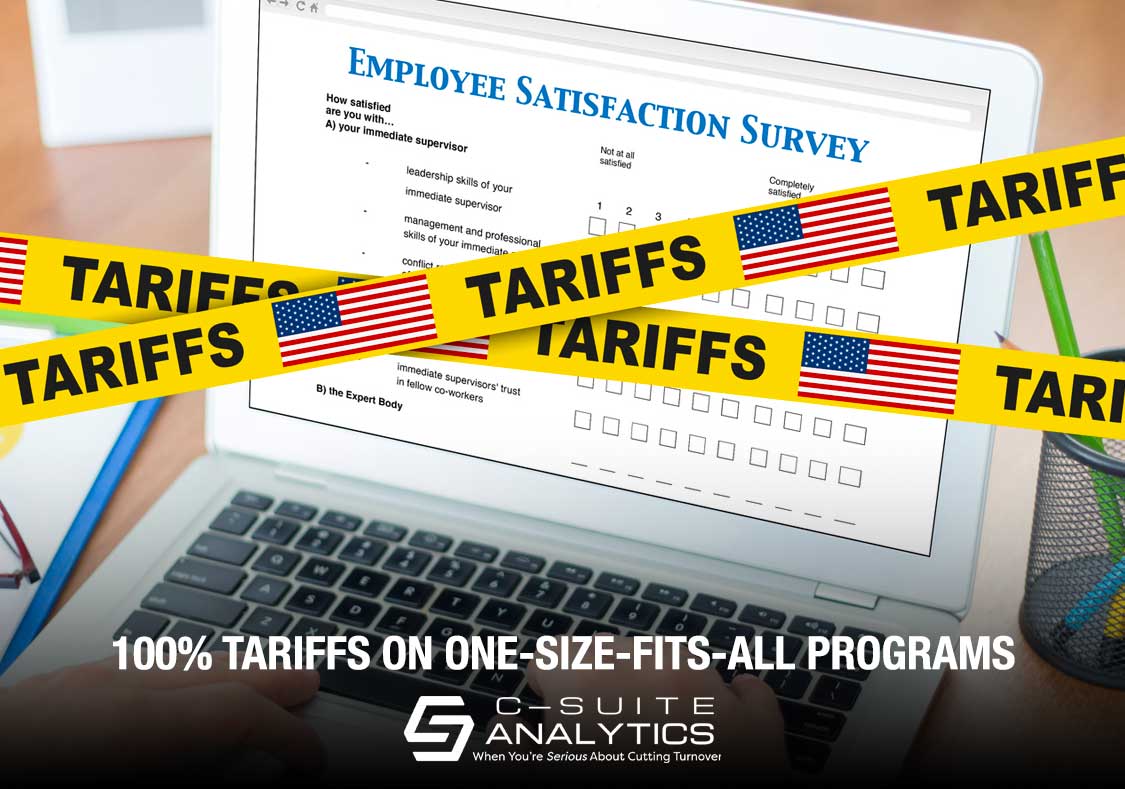Discover how calculating the true cost of employee turnover—especially nurse turnover—can transform executive mindset and drive real retention strategies. Learn the ROI of keeping your top talent and why finance and HR must align.
Drive Your Employee Retention Resolutions for 2025

What should every company resolve to do in 2025 in order to cut turnover during this shiny new year? I have a suggested list of ideas, and no surprise they all revolve around building trust and holding managers accountable for their employee retention.
Make Retention at Least as Important as Recruiting
Your organization pays HR people specifically to recruit to fill open jobs, meaning to post jobs, interview candidates, maybe even make hiring decisions. There are budgets for these recruiter jobs and these activities. What do you do that is similar for improving retention?
The mystifying part of this question is that most companies have no actual plan for retention, or at least a plan that works. They associate retention with engagement surveys, exit surveys, pay, benefits, onboarding…all of the usually-connected HR stuff. The following resolutions will actually provide a plan that cuts turnover.
And by the way, several studies are now saying that new hires remain with your company for shorter periods of time than ever before. So recruiting without retention really is like a dog chasing her tail. Let’s not be doggies.
Involve Finance in Putting a Cost on Turnover
Most CFOs come to work each day scanning their reports for ways to improve revenue and cut costs. Their net dollar outcomes are like searching for quarters in the couch compared to cutting the turnover they associate with HR which is around the corner or down the hall.
Related, reporting turnover by percentage alone is like speaking Japanese to CEOs. They and their CFO compadres are conditioned to speak dollars only. And the true cost of turnover would alarm them…so they need that alarming moment to fulfill the responsibilities of their jobs. The absolute best turnover cost calculator is available to you for no cost at on our website. Put it to use, but only if a finance rep is beside you when using it.
—–
Further Reading: Escape the Benchmark Data Trap and Calculate Turnover’s Real Cost
—–
Establish Two Goals for Turnover and Build Operations Accountability
Set goals to improve company-wide turnover and also new-hire retention, showing at least a 30% improvement for both. Tell operations managers they are responsible for both outcomes and include HR accountability for the new-hire goal. Develop reports that finger who is achieving their goals and who is not.
The number one reason employees stay or leave is how much they trust their boss. That trust is built or broken by each employee’s experience with day-to-day work including relationships with their boss, their colleagues, and their duties. The one person who has most influence over these relationships is that employee’s direct supervisor. Retention won’t improve unless you hold that person accountable to improve it.
Train supervisors top to bottom to conduct Stay Interviews
I invented Stay Interviews with a top-selling book in 2012 because leaders on all levels need an interactive way to build trust with each member of their teams. Training is complex because leaders need to learn to ask five carefully-scripted questions, take notes, probe to learn more, and take responsibility for outcomes versus blame others. But when the five initial questions are converted to twenty questions due to solid listening and well-developed probes, leaders leave the room with pages of notes that make building a one-on-one retention plan do-able for each individual employee.
Then ask leaders to forecast how long each employee will stay. Make this essential task easy by using a traffic light approach with green meaning that employee will be here in a year, yellow indicating will be gone in 6-12 months voluntarily or involuntarily, and red to indicate less than six months. Tell supervisors they can change their forecast any time but will be ultimately accountable for their ability to know their employees so well that they can predict when they will leave.
Then build accountability systems the same way you do for other top objectives. We’re going to do something new this year with clients. Once their executives agree to turnover’s costs and the resulting two retention goals, we will ask those executives where retention fits against other high-priority goals like revenue, expenses, safety, and the like. Then we will ask them to identify precisely how they hold leaders accountable for those higher-priority outcomes, and subsequently that they hold leaders accountable for retention in identical ways. Same types of reports, same agenda items in key management meetings.
—–
Further Reading: Securing HR’s “Seat at The Table”
—–
Notice there is no mention of raising pay, increasing benefits, adding more employee surveys, or gathering more exit survey results. Just start with a list that focuses on first-line leaders building trust and becoming accountable for their talent. Then apply two key metrics to make leaders accountable for their goals and to develop accurate forecasts…the same metrics CEOs use to hold salespeople accountable, goals and forecasts.
—–
Further Reading: Why Employee Surveys Fail to Truly Boost Engagement
—–
No One is Coming to Fix Turnover – You Have to Decide to Do It Now
The U.S. Bureau of Labor Statistics tells us that the median tenure for US workers has slipped to 3.9 years, down from 4.1 years in 2022 and the lowest since 2002.[i] This slip seems tiny except when compared to the average tenure of baby boomers which has been greater than 8 years which is double the above amount.[ii]
What my recent work and the U.S. Census Bureau data makes clear is that fewer new workers will come our way, and the quality of those workers offers no greater promise. So now is the time to get a lot smarter about who we hire and how we retain them.
Need help establishing retention goals for 2025?
Schedule a conversation with me at DFinnegan@C-SuiteAnalytics.com and we’ll discuss the numbers and needs you should have to evaluate your retention goals. We work with companies in every type of industry to cut turnover by 30% and more by building trust and accountabilities.
[i]https://www.bls.gov/news.release/tenure.nr0.htm#:~:text=For%20women%2C%20median%20tenure%20was,See%20tables%201%20and%203
[ii]https://www.careerbuilder.com/advice/blog/how-long-should-you-stay-in-a-job



